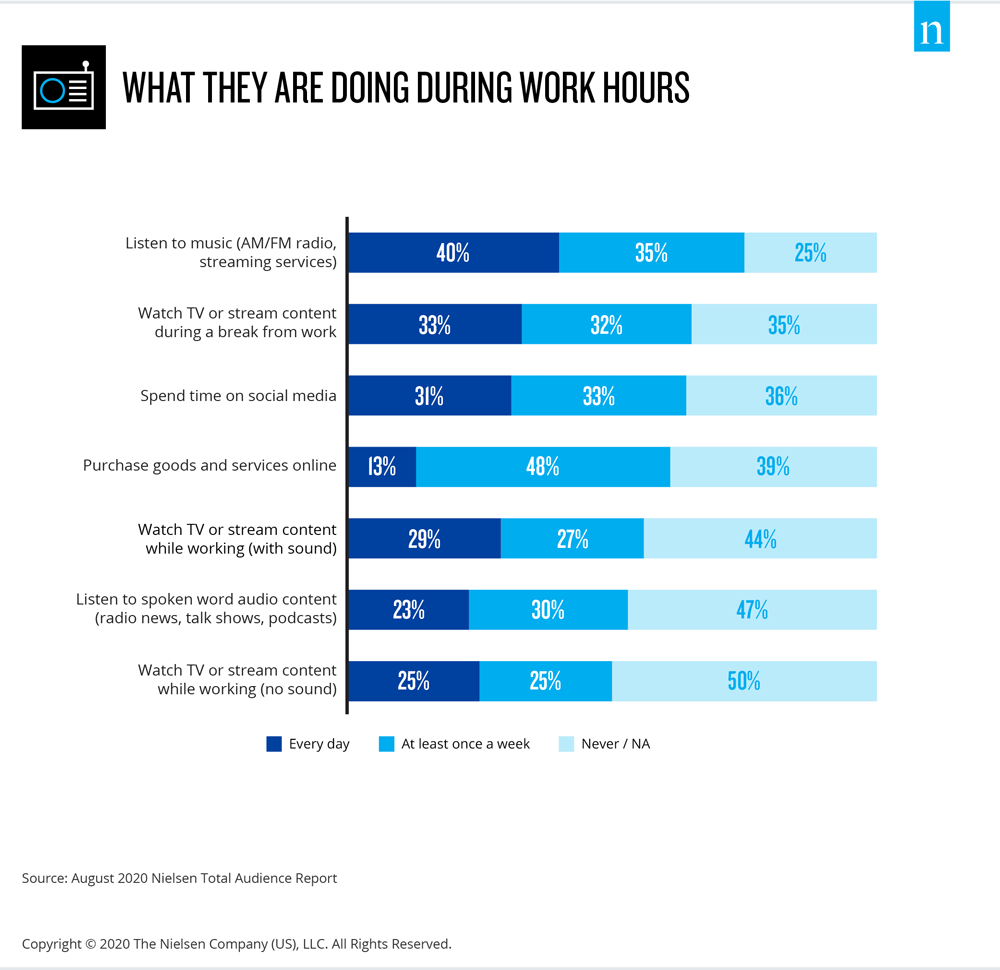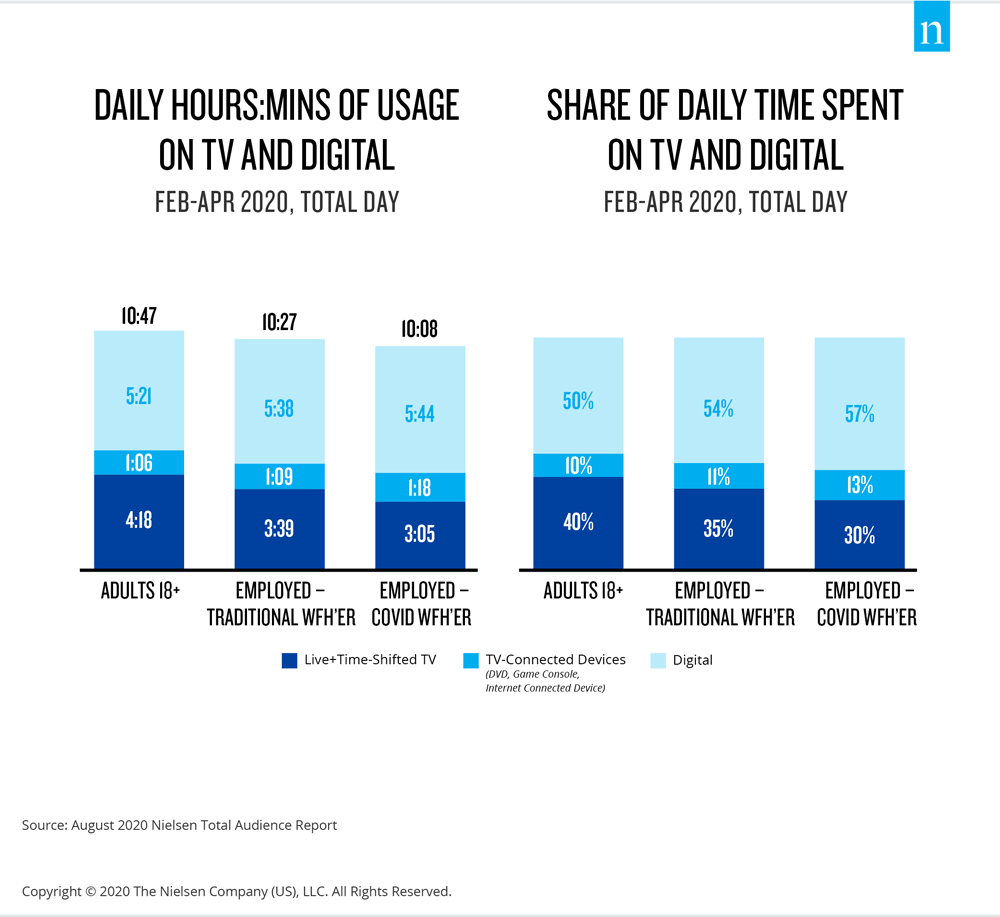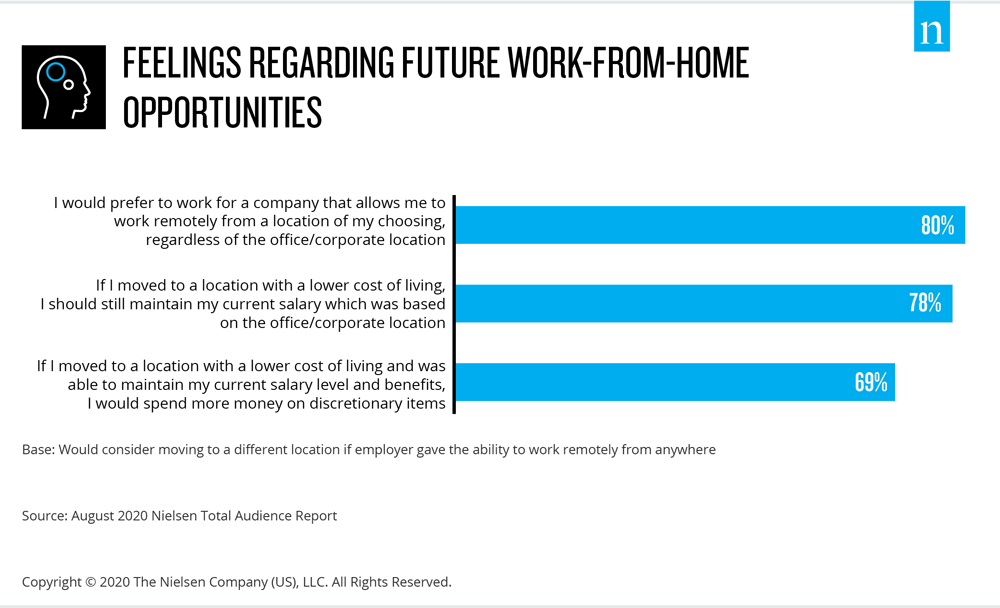
In more ways than have yet to be realized, the novel coronavirus (COVID-19) pandemic has changed the day-to-day lives of nearly every consumer the world over. This is especially true for office workers with traditional nine-to-five day jobs, where in-person meetings were the standard and the dress code called for something more formal than leisurewear. In the U.S., the country’s quarantine forced many to bring the office home, effectively blurring the lines between work, life and leisure.
More time at home for consumers means more exposure to the wide array of content and ads available in an exceedingly more digital world. And the longer Americans work from home—regardless of whether by choice or not—the greater the likelihood that their recently developed media habits will stick around, ultimately changing the playing field for how publishers and advertisers are able to engage with audiences. Could daytime become the new primetime? A future where consumers spend more time at home has implications beyond longer time spent with media in general; it means more opportunities for local businesses and communities to grow as well as more of a focus that marketers should be placing on them.
According to Nielsen’s Total Audience Report: Work from Home Edition, two-thirds (66%) of U.S. remote workers reported to have started working from home since the coronavirus outbreak, an incredibly massive migration of people into an alternate work setting. Despite being thrust into the work from home experience as a restrictive safety measure with little prep time, respondents not only adapted but quickly became comfortable with this new way to live and work (or work and live). Some even seem like they’re thriving in this new environment.
Overall, new work-from-home consumers seem to be settling in with ease. In fact, just two percentage points separate those who worked from home before the pandemic and feel somewhat or very engaged while working (65%) to those who feel the same way but started working from home during the pandemic (63%). When looking at their sentiments on remote work, consumers—habitually accustomed to choosing how much content to watch, as well as when and where to connect with it—largely say that working from home affords them a similar level of choice. Being able to choose how and where they work allows them to achieve a more agreeable work/life balance. The result? They’ve embraced virtual technologies, as well as their local communities and businesses

With more flexible work schedules, what does media consumption look like? Answer: less structured media consumption and an interweaving of work and play.
Pre-pandemic, peak media hours were typically limited to before employees clocked in and after they clocked out, depending on the medium. With the elimination of a commute and the full array of their preferred platforms available, working from home provides consumers two elements vital to increasing consumption: time and choice. Whether its streaming video content, listening to podcasts or browsing social media, a majority of consumers have reported partaking in these behaviors during work hours. That means more windows of opportunity for content creators and advertisers alike to reach audiences outside of the traditional primetime, as well as potential new, creative ways to engage with consumers.

This new flexibility in media consumption is intensified by the fact that consumers have more digital platforms to choose from. We know that overall, new work from home consumers have embraced the technology that allows them to work efficiently while remote—but what about the technology for content consumption?

Compared with those who were working from home before the pandemic, new remote workers leverage TV-connected devices and digital platforms at a higher clip. They dedicate more than seven hours (or 70% of their time spent with TV and digital devices) to devices other than linear television. In other words, new remote workers aren’t just embracing the new freedoms they have during the work day; they’re also capitalizing on the freedom of content choice given to them by more dynamic media platforms.
According to The Nielsen Remote Workers Consumer Survey, 52% of consumers would like to be able to work from home going forward, while 25% would like to work from home exclusively. The possibility of permanent, widespread remote work could further cement the media habits that have been adopted during quarantine. Not only that, but more discretionary spending as a result of cutting the cost of traditional office life could arise as well, making effective advertising for the remote work life all the more important.
An overwhelming amount of respondents also say they would like to be allowed to work remotely from a location of their choosing, as well as maintain their current salary. Should they be allowed both, 69% of respondents said they would spend more money on discretionary items. That bodes well for local businesses and regional brands in particular when we recall that remote work consumers reported being more inclined to spend their money within their community. Moreover, areas that are seen as more affordable, attractive, and under-the-radar would potentially face an influx of new residents.

Of course, actually working from home is contingent on employees working and not streaming the newest season of their favorite content the entire day. But employers should know that while 72% of new remote workers perceive themselves to be more or just as productive working from home than at the office, 89% of pre-pandemic remote workers had the same sentiment.
As new remote workers expand their days and become better adjusted and if employers make an effort to optimize employee home life, remote working could prove to be beneficial as a long term solution for employees, employers and the media and advertising industries alike.
To learn more about the data behind this article and what Nielsen has to offer, visit https://www.nielsen.com/us/en/.







Sign up to receive our stories in your inbox.
Data is changing the speed of business. Investors, Corporations, and Governments are buying new, differentiated data to gain visibility make better decisions. Don't fall behind. Let us help.













Sign up to receive our stories in your inbox.
Data is changing the speed of business. Investors, Corporations, and Governments are buying new, differentiated data to gain visibility make better decisions. Don't fall behind. Let us help.





